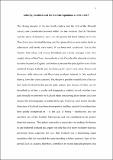Lollardy, Hussitism and the Scottish Inquisition, c.1390 - c.1527
Abstract
This article is a critical assessment of the evidence of heresy and heterodoxy in late medieval Scotland and demonstrates the development of inquisition in Scotland from the late fourteenth century to the Reformation. The overarching argument presented here is that while there is slim and problematic evidence, the pattern in Scotland of a continuum of heightened concern about heresy from both church and civil authorities from the 1390s correlates to broader European patterns. In repositioning this history within a framework of Continental religio-politics, this article argues that inquistion was fairly quickly established and examines the reasons for this development. It considers the dual roles of the church and crown in inquisistorial processes and suggests that one of the known trials for Lollardy was staged with royal support, to demonstrate the authority and reach of the newly-raised archbishopric of Glasgow in opposition to the preeminent archbishopric of St Andrews.
Citation
Stevenson , K 2015 , ' Lollardy, Hussitism and the Scottish Inquisition, c.1390 - c.1527 ' , Revue d'histoire ecclésiastique , vol. 110 , no. 3-4 , pp. 684-715 . https://doi.org/10.1484/J.RHE.5.108490
Publication
Revue d'histoire ecclésiastique
Status
Peer reviewed
ISSN
0035-2381Type
Journal article
Collections
Items in the St Andrews Research Repository are protected by copyright, with all rights reserved, unless otherwise indicated.

